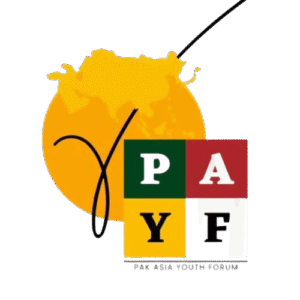What would happen if you woke up one day and your city simply ran out of water? Imagine having no water to drink, cook, clean, or bathe. A city of 7 million people is trying hard to get just one drop of water. Afghanistan’s capital is on the edge of this nightmare. Kabul’s population has increased from 1 million in 2001 to around 7 million in 2025, changing water demands. Many other factors, such as rapid urban growth, climate change, decades of conflict, and poor water governance, have made Kabul a perfect epicenter of the water crisis.
CAUSES OF WATER CRISIS IN KABUL:
Underground water is the main source of clean water for Kabul, obtained through boreholes. Over the past decade, the city’s aquifers have dropped by 25 to 30 meters. Experts indicate that extracting 44 million cubic meters of water annually, which exceeds natural recharge, is causing boreholes to run dry throughout the city. Furthermore, there are over 120,000 unregulated boreholes that drain three main aquifers, leading to water shortage as the natural recharge rate is much less than the extraction rate. Additionally, about 80% of Kabul’s underground water is contaminated with sewage, making it unsafe to drink. This contaminated water not only poses serious health challenges but also increases the price of water treatment. For this reason, many households spend 30% of their income on unsafe water, falling into debt.
RISKS AND IMPACTS:
Kabul’s water insecurity is no longer just a health concern; it’s fast becoming a driver of economic displacement, urban poverty, and potential regional instability. Water scarcity also exacerbates food insecurity, as agriculture heavily relies on irrigation, and insufficient water can lead to a decline in crop yields, increasing food insecurity, hunger, and even poverty. Suppose the current situation continues to exist by the year 2030. In that case, Kabul will become the first modern capital of the world to completely run out of water, leading to mass displacements, a health crisis, widespread humanitarian crisis, migrations, and a destabilized region.
In a broader national context, approximately 33 million people face water shortages across Afghanistan, mainly due to erratic rainfalls, droughts, and reduced snowfall. Years of conflict have damaged water infrastructure, whereas weak governance has failed to regulate water extraction. The geographic location of Kabul, with limited surface water, further exacerbates the problem.
GOVERNANCE AND INFRASTRUCTURE CHALLENGES:
The water shortage and crisis in Afghanistan have also been exacerbated due to a lack of good governance, a failed sustainable water management system, poor infrastructure, and poor regulation of water. Kabul’s residents rely on unmonitored wells due to the lack of a centralized water management system, and private companies exploit this condition of the people and sell water at skyrocketing prices. International aid and investments are often restricted and tied up in politics, leading to limited long-term sustainable solutions.
CLIMATE CHANGE AND REGIONAL WATER COOPERATION:
Climate change is another critical factor resulting in the water crisis by changing precipitation patterns, increased glacial melts in the Hindu Kush mountains, which feed the city’s aquifers and rivers. A report by the Intergovernmental Panel on Climate Change shows that the central Asian region, including Afghanistan, is facing an increase in temperaturesresulting in droughts, reduced snowpack and river flow, which is important for underground water recharge, which further decreases the availability of surface and underground water for Kabul. Additionally, Afghanistan has transboundary water resources, and regional cooperation on water is crucial for Afghanistan; however, political tensions undermine cooperation. According to the World Bank, joint water sharing frameworks and diplomatic efforts are very important to increase water security and promote sustainable development in the region.
FUTURE PROSPECTS:
Experts warn that short-term solutions will not resolve the problem. It requires a sustainable water management system through:
- Strengthening water governance: Enforcing water regulations on drilling boreholes, over-extraction, and water usage.
- Investing in infrastructure: Building and repairing damaged infrastructure like water reservoirs, dams, and irrigation systems to improve water storage. Promoting rainwater harvesting and efficient irrigation systems to decrease reliance on underground water.
- Public awareness: Public awareness programs about water-saving techniques and the dangers of over-extraction should be launched, engaging local communities, which may help to reduce water waste and increase water conservation.
In conclusion, the water crisis in Afghanistan, specifically in Kabul, is driven by many factors such as over-extraction, population growth, contamination, climate change, and conflicts. Immediate solutions like strengthening governance, infrastructure, and sustainable water management systems are crucial to prevent Kabul from becoming the first capital to run out of water by the year 2030, and it is also essential to secure Kabul and its people’s future. Kabul’s water crisis is an example of how rapid urbanization and poor governance can transform a threat into a survival challenge.



